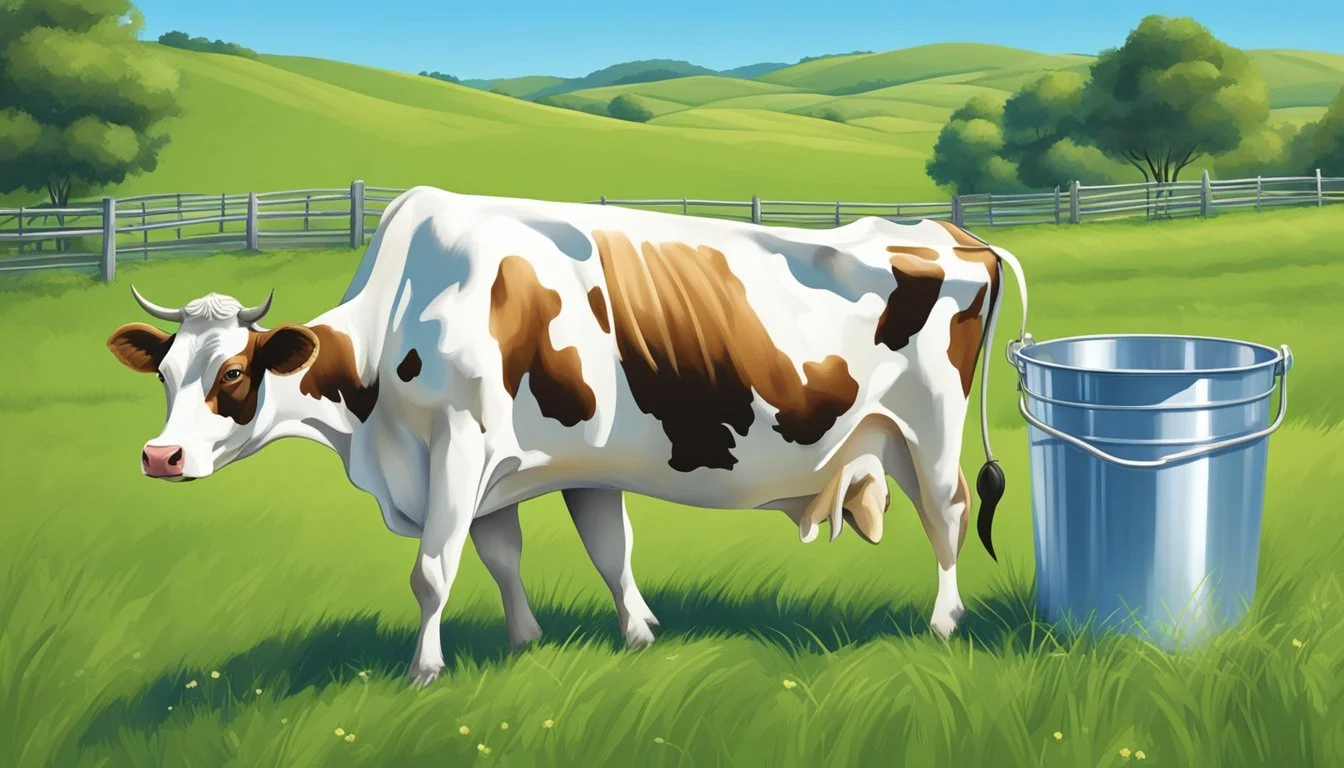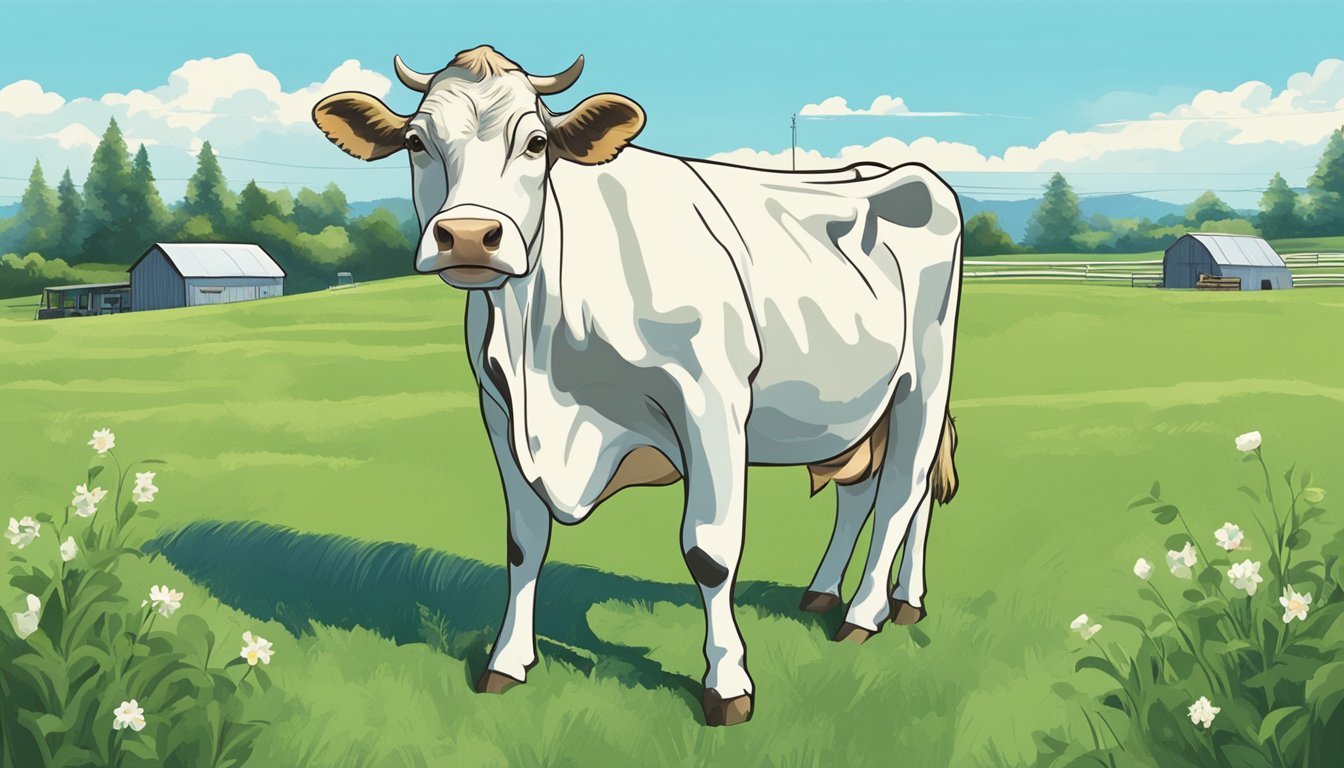A Guide to Introducing Raw Milk into Your Diet Responsibly
Healthful Strategies
Raw milk is a traditional food that has been consumed for thousands of years and is recognized for its rich nutrient profile. It is milk that has not been pasteurized or homogenized, preserving its natural enzymes, vitamins, and minerals. Proponents of raw milk claim it offers health benefits such as improved digestion, stronger immune system, and higher levels of beneficial bacteria.
Introducing raw milk into one's diet should be done with an understanding of both its potential benefits and risks. It is essential to source raw milk from reputable farms with high standards for animal welfare and cleanliness to reduce the risk of contamination. Despite its nutrient density, raw milk may pose health risks due to the presence of pathogens that are normally eliminated through pasteurization.
Consumers considering raw milk should also be cognizant of their individual health needs and consult with a healthcare professional. Those with compromised immune systems, pregnant women, infants, and the elderly should exercise particular caution. By taking these considerations into account, individuals can make informed decisions about including raw milk in their diets.
Are you considering incorporating raw milk into your diet? "A Guide to Introducing Raw Milk into Your Diet Responsibly" is your essential companion for navigating this nutritional journey. Learn about the potential benefits of raw milk for athletic performance and how it compares to raw vs. plant-based milks. With insightful raw milk fast facts, you'll gain a deeper understanding of the nutrient profile and potential advantages of raw milk consumption.
Discover the raw milk economic benefits and how responsibly sourcing raw milk can be a sustainable choice for both your health and the environment. Unleash your culinary creativity with raw milk gourmet cooking, exploring the diverse ways to incorporate raw milk into your meals and elevate your dining experience.
Delve into the world of fermented raw milk and its potential to support gut health and overall well-being. "A Guide to Introducing Raw Milk into Your Diet Responsibly" equips you with the knowledge and resources to embrace raw milk as a valuable addition to your dietary lifestyle, ensuring that you can enjoy its benefits in a safe and responsible manner.
Understanding Raw Milk
Raw milk is milk in its unprocessed form, directly sourced from animals such as cows, goats, and sheep. This section will explore the nutritional components of raw milk, consider the safety and risks associated with its consumption, and discuss its regulations and availability.
Nutritional Profile
Raw milk is appreciated for its rich nutritional profile. It contains a variety of nutrients such as protein, vitamins, and minerals that are essential for the body. Proponents suggest that because it is unprocessed, raw milk also retains enzymes and additional nutrients that might be reduced during the pasteurization process.
Key Nutrients in Raw Milk:
Proteins: Essential for muscle repair and immune function.
Vitamins: Including A, D, and B complex.
Minerals: Such as calcium, magnesium, and phosphorus.
Enzymes: Necessary for facilitating various biochemical reactions.
Safety and Risks
While raw milk can be an excellent source of nutrition, it may also pose health risks due to the presence of pathogens like E. coli, Salmonella, and Listeria that can cause serious illness. The absence of pasteurization, a process that heats milk to kill harmful bacteria, means that raw milk requires stringent handling to ensure safety.
Risks Associated with Raw Milk:
Bacterial Contamination: Potential presence of harmful microorganisms.
Disease: Risk of foodborne illnesses, which can be severe for pregnant women, infants, the elderly, and those with weakened immune systems.
Regulations and Availability
The sale and distribution of raw milk are governed by state and federal regulations, which vary widely. Some states allow retail sales, while others restrict sales to the farm level or through herd-share agreements. Websites like realmilk.com can provide consumers with information about the legal status of raw milk in different locations as well as lists of producers.
Availability Considerations:
Regulations: Check state laws regarding raw milk sales and distribution.
Sources: Purchase from reputable producers or farmers' markets known for safe handling practices.
Grass-Fed: Look for milk from grass-fed animals, which can influence the nutritional quality of the milk.
Health Implications
When considering the introduction of raw milk into one's diet, it is important to weigh the associated health implications, from digestive health to immune system support.
Digestive Health
Raw milk may benefit digestive health due to the presence of digestive enzymes and beneficial bacteria which aid in breaking down lactose and proteins, potentially easing digestive issues. These probiotics can be particularly helpful for individuals with lactose intolerance as they assist the digestive system in processing lactose due to the natural occurrence of the lactase enzyme in raw dairy.
Possible Allergic Reactions
Consuming raw milk carries a risk of allergic reactions for some individuals. Milk protein allergies, which can occur in roughly 2-3% of children in their first year, may be provoked by proteins found in raw milk. Adults with dairy sensitivity or a history of allergic reactions to dairy should approach the consumption of raw milk with caution.
Nutrient Absorption
Raw milk is rich in bioavailable vitamins, such as Vitamin A, and minerals like calcium and magnesium, essential for bone health. These nutrients in raw milk are in forms that are easier for the body to absorb and utilize, potentially offering more direct health benefits compared to pasteurized milk.
Immune System Support
Proponents of raw milk suggest that it may support the immune system due to its natural components, including anti-inflammatory agents and immune-modulating factors. However, it is critical to balance these potential benefits against the risk of exposure to harmful pathogens that could lead to respiratory infections and other serious health issues.
Remember, while raw milk can be a source of various nutrients and enzymes that may improve health, it's crucial to consider the safety and legal regulations of raw milk consumption in your region.
Incorporating Raw Milk into Your Diet
Integrating raw milk into one's diet involves starting with small quantities, using it in various recipes, and combining it with other wholesome foods to enhance its benefits and flavors.
Starting Out
When introducing raw milk, one should begin with small amounts to monitor the body's response due to its rich content in lactose, proteins, and fats. The individual can gradually increase the quantity as their digestive system adapts. The raw milk diet, which involves consuming significant quantities of raw milk daily, is a choice for people seeking to explore its full potential as a nutrient-dense food staple.
Recipes and Usage
Raw milk can be versatile in the kitchen. Here are ways it can be incorporated into diets:
Chocolate Milk: Mix raw milk with cocoa powder and a sweetener like honey to create a nutritious chocolate milk.
Kefir: To make raw kefir, ferment raw milk with kefir grains; this boosts its probiotic content.
Cheese: Use raw milk as a base for homemade artisanal cheese with natural enzymes intact.
Butter and Cream: Separate the cream from whole milk to churn into rich, raw butter, or use the raw cream directly in recipes.
Recipes that traditionally include dairy can be modified by substituting pasteurized versions with their raw counterparts for added nutritional profile.
Combining With Other Foods
Raw milk's creamy texture and nutritional properties make it well-suited to enhance other foods:
Fermented Dairy Products: Combining raw milk with yogurt or other fermented dairy products can increase probiotic intake.
Yogurt and Honey: Raw milk can be used to make yogurt, which pairs excellently with honey as a sweet and tangy treat.
Fats: The fats present in raw milk are important for vitamin absorption and can be balanced by incorporating a variety of fats from other sources in the diet.
Understanding Dairy Alternatives
When considering a shift away from traditional cow's milk, due to lactose intolerance or dairy sensitivities, it's important to explore the variety of dairy alternatives available. These alternatives offer diverse nutritional profiles and flavors, providing ample options for different dietary needs.
Plant-Based Options
Plant-based milk alternatives are derived from various non-dairy sources. Here are some popular options:
Soy Milk: A well-established dairy substitute rich in protein with 8-9g per cup, comparable to cow's milk.
Almond Milk: Lower in protein but offers a dose of vitamin E, making it a heart-healthy option.
Rice Milk: Known for its naturally sweet taste, this option is more watery and is a good fit for those with nut or soy allergies.
Oat Milk: Boasts a creamy texture and may provide beneficial fiber.
Cashew Milk: Another nut milk with a rich, creamy taste and is a good source of vitamin E.
Hemp Milk: Includes omega-3 fatty acids beneficial for brain and skin health with 1g per cup.
Milk Alternative Base Nutritional Highlight Soy Milk Legumes High in protein Almond Milk Nuts Source of vitamin E Rice Milk Grains Naturally sweet Oat Milk Grains May contain beneficial fiber Cashew Milk Nuts Rich, creamy taste with vitamin E Hemp Milk Seeds Omega-3 fatty acids
Lactose-Free Varieties
For individuals with lactose intolerance, lactose-free dairy milk is a direct substitute for regular milk. This milk undergoes an enzymatic process to break down lactose, the sugar that causes discomfort in lactose-intolerant individuals. Lactose-free milk offers the same nutritional benefits as regular dairy milk, including protein and calcium content, without the digestive issues associated with lactose.
Additional Considerations
When incorporating raw milk into a diet, it's essential to consider more than just the nutritional content. Economic and environmental impacts, along with ethical considerations, play significant roles in making informed choices.
Economic and Environmental Impact
Raw milk often comes from smaller-scale producers who may use grass-fed cattle. This practice can lead to reduced environmental strain as grass-fed systems generally have a lower carbon footprint compared to large-scale industrial farms. Economically, buying raw milk can support local producers and the rural economy. However, consumers should note that raw milk can be more expensive due to the specialized handling required to ensure safety.
Environmental Benefits:
Lower emissions from grass-fed operations.
Potential for more sustainable land management.
Economic Factors:
Higher cost due to safety protocols.
Support for local producers and communities.
Ethical Considerations
Ethically, purchasing raw milk may support farms where cows are treated more humanely, allowed to graze freely, and not subjected to antibiotics or synthetic hormones. However, consumers should vet each producer thoroughly to ensure that their ethical standards meet personal values. Furthermore, ethical considerations encompass the handling of milk to maintain the probiotics, fatty acids like CLA, K2, and other beneficial bacteria which may provide health benefits like better blood sugar control and fertility enhancement.
Ethical Benefits:
Potentially better animal welfare.
Avoidance of antibiotics and synthetic hormones.
Health-Related Ethics:
Preservation of probiotics and beneficial bacteria.
Maintenance of vitamins and fatty acids critical for health.
Raw Milk and Long-Term Health
When considering the incorporation of raw milk into one's diet, it is crucial to understand how it may relate to long-term health, particularly in managing chronic conditions and preventing health issues. This guide provides a focused look at the potential long-term benefits and risks associated with raw dairy consumption.
Managing Chronic Conditions
Incorporating raw milk into the diet has been suggested by some to positively affect chronic conditions such as allergies and asthma. The presence of probiotics and good bacteria in raw milk products like raw cheese can support a healthy digestive system, which is fundamental in managing conditions like irritable bowel syndrome (IBS) and dairy sensitivity. Additionally, raw milk is a source of enzymes that could help in digesting lactose, potentially benefiting those with lactose intolerance. However, claims about raw milk’s benefits must be approached with caution as they are not universally accepted within the scientific community, and unpasteurized milk can carry risks of foodborne illnesses.
Preventing Health Issues
Raw milk is rich in vitamins and minerals such as calcium, Vitamin K2, and certain enzymes that are important for bone health and may influence fertility and blood sugar regulation. The full complement of natural proteins and enzymes present in raw milk is believed by some to be more readily available to the body, possibly aiding in nutrition and preventing deficiencies. However, it's important to recognize the potential dangers as well, as raw milk can contain harmful bacteria leading to illnesses with symptoms like diarrhea, stomach cramping, and vomiting. Consumption of raw milk should thus be carefully considered, with attention to sourcing from reputable producers and adhering to proper handling practices to minimize health risks.
Resources and Further Reading
For individuals interested in incorporating raw milk into their diets, a wealth of resources is available to deepen their understanding and facilitate a safe transition. These resources offer a range of perspectives and practical advice, ensuring well-informed decisions.
Websites:
Realmilk.com: This website is a comprehensive hub for raw milk information, covering topics from health benefits to locating local suppliers.
Raw Milk Institute: An authoritative source, the Raw Milk Institute provides insights on raw milk's nutritional benefits and standards for safe consumption.
Books:
For readers seeking a more in-depth exploration, several books have been published on the subject:
The Untold Story of Milk by Ron Schmid, ND: A thorough historical and scientific review of milk, including discussions on the raw milk movement.
The Raw Milk Revolution by David E. Gumpert: This book delves into the controversy surrounding raw milk from legal, health, and personal standpoints.
It is imperative that readers vet their resources carefully, seeking information from credible, scientifically backed, and unbiased sources. When considering books, they should opt for works that are well-researched and contain citations for their claims, allowing for further verification. Additionally, consulting healthcare professionals and nutritionists familiar with raw milk can provide personalized guidance tailored to individual health profiles and dietary needs.
Conclusion
Introducing raw milk into one's diet can be a significant change and should be approached with care. Individuals considering this dietary addition should prioritize sourcing their milk from reputable farms that follow strict hygiene standards to ensure safety. Quality is paramount; one should look for producers who provide unprocessed raw milk from cows raised on natural diets without antibiotics or synthetic hormones.
Those new to raw milk might start with small quantities, observing how their bodies respond before gradually increasing intake. It is essential to remember that not everyone may tolerate raw milk well, and some may need to avoid it due to immune system concerns or lactose intolerance.
For an optimal experience, consumers should also be aware of the possible nutritional benefits, such as the presence of beneficial bacteria, enzymes, and bioavailable nutrients that raw milk can offer. However, they should balance these potential benefits with an understanding of the risks involved, notably the chance of exposure to harmful microorganisms.
In conclusion, anyone considering the inclusion of raw milk in their diet should do so thoughtfully and informedly. Seeking advice from healthcare professionals and thorough personal research can lead to a responsible and health-conscious decision. Whether one chooses raw milk or opts for pasteurized alternatives, the overarching goal remains to support one's well-being with safe and nutritious choices.








